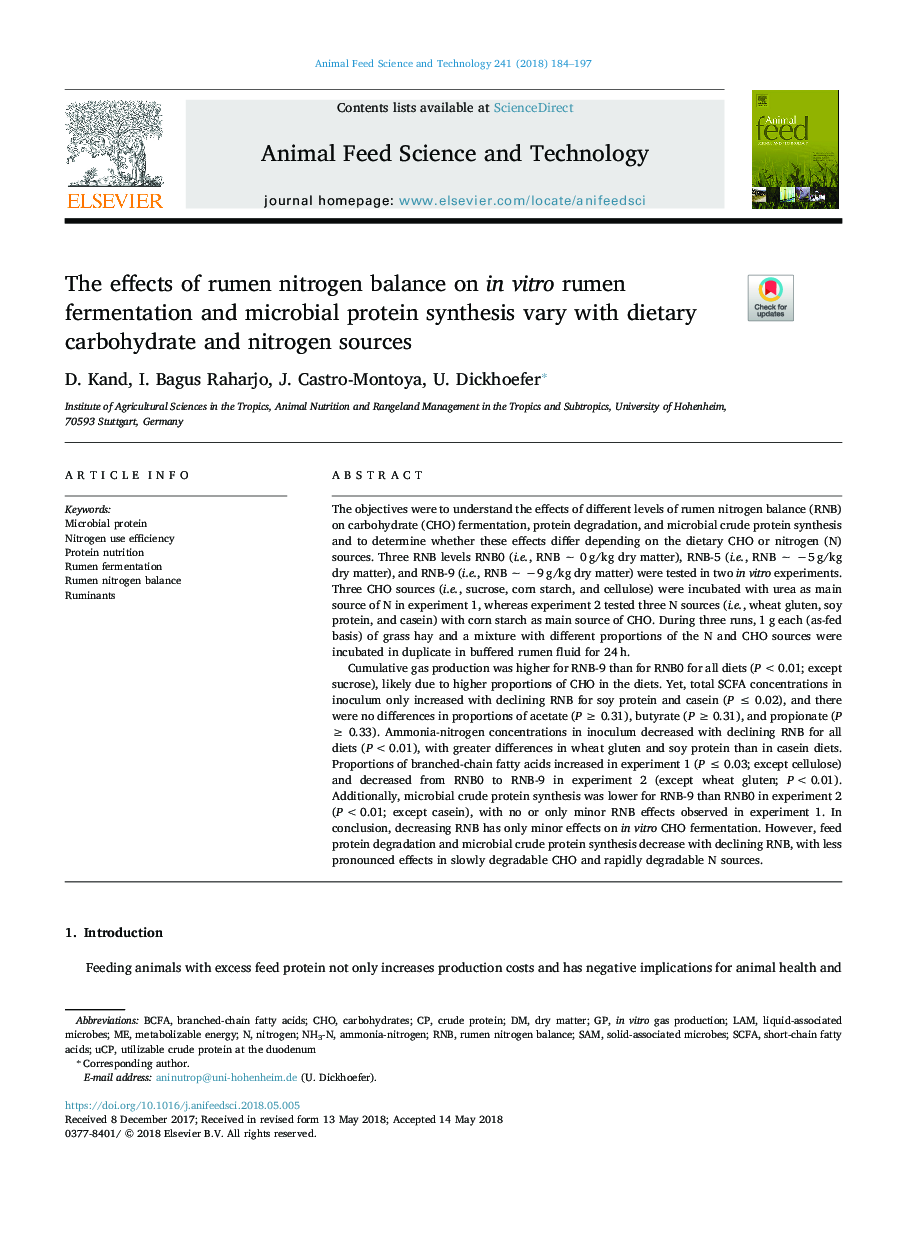| Article ID | Journal | Published Year | Pages | File Type |
|---|---|---|---|---|
| 8490938 | Animal Feed Science and Technology | 2018 | 14 Pages |
Abstract
Cumulative gas production was higher for RNB-9 than for RNB0 for all diets (P < 0.01; except sucrose), likely due to higher proportions of CHO in the diets. Yet, total SCFA concentrations in inoculum only increased with declining RNB for soy protein and casein (P ⤠0.02), and there were no differences in proportions of acetate (P ⥠0.31), butyrate (P ⥠0.31), and propionate (P ⥠0.33). Ammonia-nitrogen concentrations in inoculum decreased with declining RNB for all diets (P < 0.01), with greater differences in wheat gluten and soy protein than in casein diets. Proportions of branched-chain fatty acids increased in experiment 1 (P ⤠0.03; except cellulose) and decreased from RNB0 to RNB-9 in experiment 2 (except wheat gluten; P < 0.01). Additionally, microbial crude protein synthesis was lower for RNB-9 than RNB0 in experiment 2 (P < 0.01; except casein), with no or only minor RNB effects observed in experiment 1. In conclusion, decreasing RNB has only minor effects on in vitro CHO fermentation. However, feed protein degradation and microbial crude protein synthesis decrease with declining RNB, with less pronounced effects in slowly degradable CHO and rapidly degradable N sources.
Keywords
Related Topics
Life Sciences
Agricultural and Biological Sciences
Animal Science and Zoology
Authors
D. Kand, I. Bagus Raharjo, J. Castro-Montoya, U. Dickhoefer,
